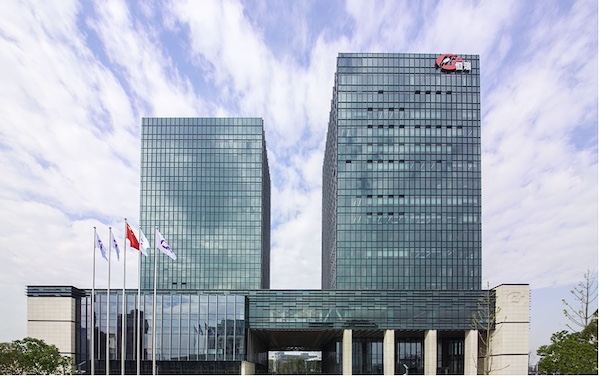Innovative Drug FXI Inhibitor SHR-2004 Injection Phase I Healthy Human Study Results Shine at ASH
December 30, 2023
Source: drugdu
 342
342

Recently, the 65th American Society of Hematology Annual Meeting (ASH) was held in San Diego, USA. As one of the largest and most comprehensive international conferences covering both malignant and non-malignant hematology, ASH attracts over 25,000 hematologists from more than 100 countries each year, sharing cutting-edge advances and breakthrough clinical data in hematology. At this conference, the independently developed (Factor XI) FXI inhibitor SHR-2004 injection by Hengrui Pharmaceuticals was presented as a poster. The research results are encouraging, supporting further clinical exploration in the prevention or treatment of venous thromboembolic diseases.
Research Background
SHR-2004 injection is a humanized monoclonal antibody that selectively binds to coagulation factors FXI and FXIa, inhibiting the activation of FXI by FXIIa and thereby blocking the cascade reaction process of the endogenous coagulation pathway, exerting an anticoagulant effect. Preclinical studies have shown that SHR-2004 prolongs activated partial thromboplastin time (APTT) and inhibits FXI activity.
This study is a single-center, randomized, double-blind, dose-escalation, placebo-controlled study aimed at evaluating the safety, tolerability, pharmacokinetics (PK), and pharmacodynamics (PD) of SHR-2004 in the healthy population in China (NCT05369767).
Research Methods
The study included healthy male subjects aged 18 to 55 years with a BMI between 19 and <28 kg/m2 or infertile female subjects. The study had two parts, A and B: In Part A, 24 healthy subjects (8 subjects per dose group) were randomized in a 3:1 ratio to receive a single intravenous injection of SHR-2004 (0.1, 0.3, or 1.0 mg/kg) or a matching placebo; In Part B, 40 subjects (10 subjects per dose group) were randomized in a 4:1 ratio to receive a single subcutaneous injection of SHR-2004 (0.5, 1.0, 3.0, or 4.5 mg/kg) or a matching placebo.
Research Results
PK: After a single administration of different doses of SHR-2004, the plasma exposure of SHR-2004 increased proportionally with the dose. The median Tmax for the intravenous administration group was 1.76 to 2.79 hours, and for the subcutaneous administration group, it was 4.0 to 6.5 days. The geometric mean elimination half-life (t1/2) of SHR-2004 for the intravenous administration group was 12.4 to 13.2 days, and for the subcutaneous administration group, it was 11.7 to 12 days.
PD: The FXI activity inhibition and APTT prolongation in the SHR-2004 dose groups were significantly higher than those in the placebo group. With the increase in SHR-2004 dose, the degree and duration of FXI activity inhibition, as well as the multiples and duration of APTT prolongation, gradually increased.
Safety: SHR-2004 showed good tolerability at all tested doses, and the treatment-emergent adverse events (TEAE) during the treatment were mild.
Conclusion
The intravenous or subcutaneous injection of SHR-2004 in healthy subjects demonstrated acceptable safety and tolerability, showing a good dose-exposure-PD effect relationship after administration. As a potential anticoagulant, SHR-2004 is expected to further clinical exploration in preventing or treating venous thromboembolic diseases while minimizing the risk of bleeding. We look forward to more data in the future, accumulating more Chinese population data for the application of FXI inhibitors in the prevention and treatment of thrombotic diseases.
In addition to SHR-2004, at this ASH conference, Hengrui Pharmaceuticals also presented 12 studies on four innovative drugs independently developed, including TPO receptor agonist Eltrombopag, PD-1 inhibitor Camrelizumab, JAK1 inhibitor SHR0302, and the collaboratively introduced PI3Kδ inhibitor Umbralisib, reflecting the innovative strength in the field of hematology research and development in China.
网址:https://mp.weixin.qq.com/s/bePTIJCvKL67sL3vBjy2VA
By editorRead more on
- Breaking the Mold and Forging a New Path! From Insulin Technology Pioneer to Global Innovation Competitor December 4, 2025
- A subsidiary of Kingfriend Pharmaceutical Co., Ltd. has received FDA approval for its self-developed injectable dapavancin December 4, 2025
- Major ophthalmic new drug successfully completed Phase III trials December 4, 2025
- Simcere Pharmaceutical and Wangshan Wangshui have reached an exclusive licensing agreement for deuterium remidevir hydrobromide for new indications such as RSV infection December 4, 2025
- SAL0140 tablets approved for clinical trials for the treatment of chronic kidney disease December 4, 2025
your submission has already been received.
OK
Subscribe
Please enter a valid Email address!
Submit
The most relevant industry news & insight will be sent to you every two weeks.



